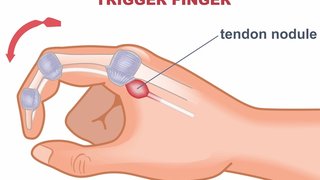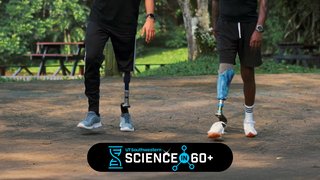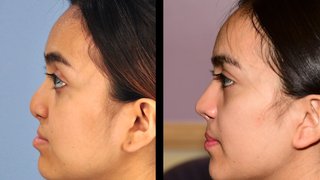Advanced surgery can stop migraines, occipital neuralgia, and daily persistent headaches
December 9, 2019

In the U.S., 39 million people struggle with debilitating migraines, and 28 million of them are women. Add severe headaches to the mix and this number goes up to up to 72 million Americans – more than 20% of the U.S. population.
These patients get frequent migraines, causing their personal and professional lives to grind to a halt. They can’t sleep or focus, and the continual symptoms of new daily persistent headaches (NDPH), migraines, or occipital neuralgia (severe headaches behind the ears, in the upper neck, and the back of the head) can drive them to depression and social isolation.
What’s more, direct costs of medication and health care expenses, as well as the indirect costs of lost productivity, wages, and disability from migraines, cost the U.S. economy an estimated $78 billion a year.
But nerve decompression, a groundbreaking procedure offered at UT Southwestern and only a handful of other places worldwide, can give patients their lives back. In addition, I have developed anatomical regional targeted (ART) Botox injection for treatment of migraines, which has resulted in significant improvement and even elimination of pain. In fact, we’ve had patients travel to Dallas from Canada, Dubai, Europe, and South America to have surgery or targeted BOTOX for migraines and headaches.
Discovered in the mid-2000s, the procedure is a unique hybrid of plastic surgery and peripheral nerve surgery. After having the procedure, in the right candidates, up to 60% of patients can experience complete elimination of headaches, and 80% to 90% of the remaining patients may have a 50% reduction in headache frequency and severity. Long-term results, which have been validated in the Journal of Plastic and Reconstructive Surgery, suggest similar outcomes. There have been numerous publications since validating these results.
What is migraine surgery?
Also known as nerve decompression surgery or migraine surgery, it strategically reduces pressure on the nerves to relieve migraine symptoms of pain. In turn, it could reduce other symptoms, such as nausea, light sensitivity, fatigue, loss of appetite, abdominal pain, and dizziness in certain patients.
Patients who have not found relief with medical migraine treatments or experience severe side effects might be eligible for the procedure. Those who are from out of state or other countries can communicate with our team via Skype or telephone for some preoperative or postoperative appointments. We ask each patient who wants the surgery to keep a headache log prior to their pre-surgical appointment so we can assess how the condition affects life at work and home. Then, we perform a neurological exam and identify the trigger points to determine whether surgery might be effective.
Nerve decompression surgery or migraine surgery strategically reduces pressure on the nerves to relieve migraine pain. In turn, it could reduce other symptoms, such as nausea, light sensitivity, fatigue, loss of appetite, abdominal pain, and dizziness.
Bardia Amirlak, M.D., FACS
How does the surgery work?
Procedures are low-risk and last one to four hours, depending on the number of trigger sites. The surgeon will make small, hidden incisions in the trigger nerve area, typically in the hairline of the neck, forehead, or temples. Muscles and tissues that are compressing the affected nerves are partially or completely removed with minimal residual side effects. Then, the surgeon pads the nerves with fat for cushioning and to prevent future compression.
The unique approach we use at UT Southwestern also addresses the smaller blood vessels and areas of compression on the greater occipital nerve more thoroughly using an endoscope to better visualize these areas. We have developed new techniques for decompressing the nerves above the eye as well as the temple. These have been published and presented worldwide. We use a small, lighted tube to visualize and treat the small branches of arteries in the back of the neck that can compress certain nerves.
Most patients go home the day of their procedure; some might stay in the hospital overnight. One to four days after surgery, we remove the drains. Some discomfort after surgery is normal. Patients might experience numbness or soreness at the surgical site for up to a week, and some might have a migraine during this time. Symptoms typically can be treated with pain medication, Botox, or nerve blocks. At times, patients feel a sensation of itching and tingling when nerves wake up, but generally this improves over time.
Two days after surgery, patients can resume showering. Five to seven days after surgery, patients will have a follow-up visit to check their recovery and address any questions or concerns they might have. Most patients can return to work within two weeks. Patients should limit physical activity, including exercise, until three weeks after surgery. We will schedule follow-ups at three weeks, three months, six months, and a year after surgery to ensure that symptoms are still manageable and to assess whether further treatment is warranted.
Patients whose triggers are in the forehead might notice a rejuvenated facial appearance with fewer wrinkles if an endoscopic technique is used – a pleasing byproduct of the surgical technique. Some patients experience headaches in other trigger areas following surgery that might have been masked before, which can be addressed with Botox or surgery.

Nerve decompression surgery for migraines
Dr. Bardia Amirlak, who specializes in targeted surgery and botox to relieve migraines, explains the procedure that can address up to six trigger sites with surgery.
What is ART Botox?
Targeted Botox, which was once used to select patients for surgery, is now used as treatment in combination with surgery or other medical treatments such as the new calcitonin gene-related peptide (CGRP) medications used for migraines. Botox was approved by the U.S. Food and Drug Administration in 2009 for treatment of chronic migraines.
However, at UT Southwestern, ART (anatomical regional targeted) is a more targeted approach to Botox that focuses on the location of the specific nerves and muscles rather than taking a shotgun approach. I developed the ART Botox paradigm after seeing the results when they were compared to the standard neurology paradigm.
Watch the procedure: Dr. Amirlak demonstrates targeted Botox for migraines
This has resulted in a nearly 50% elimination rate and a significantly better response than the standard approach. Several centers around the world have adapted the ART technique and report improved results.
Undoubtedly, a facial procedure that can cure migraines sounds too good to be true. But it works, and it can be life-changing. Patients tell us that social media has been a lifeline, helping to connect them with people who have found relief from NDPH and migraines. One such patient advocate is Joe Norbut from Denver, Colo., whose mother connected with UT Southwestern through a patient support group on Facebook.
Joe’s Story: Relief from disabling headaches
As told by his mother, Patti Holmes
Every day of the five years Joe struggled with NDPH, it felt as if an elephant was sitting on my chest. He was 11 when the headaches began in 2010, and no doctors could figure out what was wrong. When I would wake up each morning, life was OK for the first 15 seconds – then my mind became consumed with helping Joe.

Over the years, we saw approximately 20 doctors before we connected with Dr. Amirlak. Those doctors included an ear, nose, and throat specialist; neurologists; psychologists; and a pediatric neurosurgeon. We even saw the team headache doctor for the Denver Avalanche hockey team. Most doctors assumed the pain was psychological. And puberty is a tough time to develop a chronic illness, because the body is changing so much. Joe’s pain was so severe that he had to drop out of school – he ended up missing two and a half years.
When Joe was 16, we spent a week at a hospital in Colorado in August 2015. He’d had several lumbar infusions, and a whole team of doctors told us, “There’s nothing more we can do. Take him home and help him get used to living in pain.” We were devastated.
Then, a physician assistant we had seen ducked into our room and closed the door. “There is one more option,” she said, “but I’d never mention this in front of the other doctors. They don’t approve.” She told us she had read about Dr. Amirlak’s surgical options and the success many of his patients had experienced.
I started doing research online and found a blog written by another parent. Then I found some Facebook groups for parents of kids with NDPH. Our hope was restored. Up to that point, Joe and I thought we were alone in the fight. After talking with a few patients and parents online, I reached out to Dr. Amirlak in September 2015.
Dr. Amirlak’s office was fantastic about getting us in for telehealth visits by phone. We also interviewed two surgeons in San Francisco and Washington, D.C., but ultimately chose Dr. Amirlak because he was more thoughtful in considering surgery for Joe due to his age. His thorough approach made us trust him more. We flew to Dallas for two appointments in November and December 2015, and we scheduled surgery in January 2016. Joe’s first of two surgeries was in April 2016, and the surgical site was the front of his head.
Related video: See more testimonials from Dr. Amirlak's nerve decompression surgery patients.
If I hadn’t seen it myself, I wouldn’t believe how immediately effective the surgery was. Joe’s symptoms were cut in half right away. Joe had facial swelling for about a week after the first surgery. For the next two months, he had some stabbing pain in the nerves of his face. After Joe’s second surgery in June 2016, which was in the back of his head, he experienced some itching for a few months. Then, finally, he was symptom-free.
Joe returned to school in August 2016. He was thrilled to be back, though returning was difficult in some ways. His friends were a year ahead of him, and he had been socially isolated because of his illness. He adjusted quickly, though. It was unexplainably wonderful to see him rejoin society and start living his life again.
Joe is 19 now, and he recently started at Colorado State University as a computer science major. He also has a job now, working 20 hours or more a week. Joe has to be cautious of activities that might cause him to get a concussion, but otherwise, he is a normal young man.
I impress upon parents of kids with NDPH to never give up hope. It’s an awful condition to live with, but help is available. Keep exploring all the options. Look for doctors you feel comfortable with and who will listen to your child. The surgery doesn’t work for everyone, but it is an important option to explore. Parents would do anything for their kids who are sick, and UT Southwestern helped us navigate getting Joe this life-changing surgery.
A few closing thoughts
Surgery for migraines and NDPH is not a miracle cure and not everyone has full elimination of pain. That said, it can give families their lives back – and has when it works fully. While a subset of patients might have headaches after surgery, the instances in most cases are much less frequent and severe.
To find out whether you or a loved one might benefit from nerve decompression surgery for chronic migraines, call 972-695-3095 or request an appointment online.











